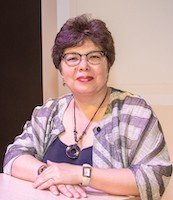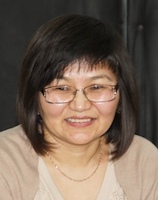Personal collection of Saaya Byurbe at the National Archives of the Republic of Tuva
DOI:
https://doi.org/10.25178/nit.2020.2.11Keywords:
archival documents; personal collection; Saaya Manmyrovich Byurbe; Tuvan music; Tuvan literature; composer; Tuvans; Tuva; State Archives of the Republic of Tuva; National Archives of the Republic of TuvaAbstract
The article examines documents from the personal fond of composer Saaya Manmyrovich Byurbe (1924–2012). Saaya Byurbe is a bright figure of the first generation of the Tuvan composers. His biography covers the most important stages in the history of Tuvan culture – pre-Soviet (PRT), Soviet and post-Soviet. The documents reveal the versatility of S. M. Byurbe’s creative mind.
Saaya Byurbe`s personal collection, now held at the National Archives (prior to 07.04.2020 known as the State Archives) of the Republic of Tuva, consists of documents donated by the composer himself and provided by his children - biographical documents, memoirs and creative materials.
Among the latter are manuscripts of musical works in different genres (symphonies, choral works, opera "Chechek", and songs), posters from concerts and educational events, an essay on Tuvan musical instruments, the text of Saaya Byurbe's speech at the Congress of Tuva`s composers, a manual titled "Developing musical culture in Tuva", and another one, "Practical assistance in primary national schools". The personal collection also contains essays and literary works in different genres (poems, a ballad, a fairy tale in verse, a fable-cum-fairy tale, short stories, a piece of documentary fiction and a short sketch).
A study of S.M. Byurbe’s personal fund has allowed us not only to present and assess his contribution to Tuvan culture in a new light, but also to discover materials of great research value and of interest to researchers of Tuvan folklore, history and tradition.
References
Byurbe, S. M. (1997) Tyva khogzhum kherekselderin ooredilge cherleringe bashkylaarynyn chyyndy programmazy: igil, byzaanchy, khomus [A collection of programs for teaching Tuvan instruments in educational institutions: igil, byzaanchy, khomus]. Kyzyl, s. n. 25 p. (In Tuv.).
Galitskaya, S. P. (2015) O professionalizme v traditsionnoi muzykal’noi kul’ture [On Professionalism in Traditional Musical Culture]. Problemy Muzykal'noj Nauki / Music Scholarship, no. 4, pp. 6–14 [online] Available at: http://journalpmn.com/index.php/PMN/article/view/238/240 (In Russ.). DOI: https://doi.org/10.17674/1997-0854.2015.4.006-014
Ivanchuk, I. V. (2005) Ritoricheskii component v publichnom diskurse nositelei elitarnoi rechevoi kul’tury [Rhetorical component in the public discourse of elite speech culture and its bearers] : Thesis of Diss. … Doctor of Philology. Saratov. 65 p. (In Russ.).
Karelina, E. K. (2009) Istoriia tuvinskoi muzyki ot padeniia dinastii Tsin do nashikh dnei [The history of Tuvan music from the fall of the Qing dynasty to the present day]. Moscow, Kompozitor. 552 p. (In Russ.).
Karelina, E. K. (2018) The problematic aspects of cultural policy in modern Tuva. Journal of Siberian Federal University. Humanities & Social Sciences, no. 11 (2), pp. 218–226. DOI: https://doi.org/10.17516/1997-1370-0217
Karelina, E. K. and Mongush, U. O. (2018) Lichnost’ kompozitora skvoz’ prizmu tvorcheskogo naslediia : k iubileiu Khuresh-oola Damba [The personality of the composer through the prism of their creative heritage: Essays for the anniversary of Khuresh-ool Damba]. Vestnik muzykal’noi nauki [Bulletin of Music Science], no. 2 (20), pp. 74–84. (In Russ.). DOI: https://doi.org/10.24411/2308-1031-2018-00051
Kostina, A. V. (2009). Natsional’naia kul'tura — etnicheskaia kul’tura — massovaia kul’tura: “Balans interesov” v sovremennom obshchestve [National culture — ethnic culture — mass culture: the “balance of interests” in modern society]. Moscow, Librokom Publ. 216 p. (In Russ.).
Kur’ianovich, A. V. (2011) Elitarnaia rechevaia kul’tura v zerkale otechestvennoi epistoliarnoi traditsii [Elite speech culture in the mirror of the national epistolary tradition]. In: Vestnik Tomskogo gos. pedagogicheskogo universiteta [Bulletin of Tomsk State Pedagogical University], issue III, pp. 76–80. (In Russ.).
Kur’ianovich, A. V. (2015) Ontologicheskii status i gnoseologicheskie aspekty izucheniia iazykovoi lichnosti v sovremennoi lingvistike [Ontological status and epistemological aspects of the study of language personality in modern linguistics]. In: Sibirskii filologicheskii zhurnal [Siberian Philological Journal], no 4, pp. 198–208. (In Russ.).
Oorzhak, M. N. (2014) Shuluk bolgash aialga. Tyva chogaalchylarnyn yry apargan shulukteri [Poems and Music. Poems by Tuvan writers that became songs]. Kyzyl, Krasnoyarsk, Ofset. 104 p. (In Tuv.).
Suzukey, V. Yu. (2017) Issues of academic study and practical acquisition of Tuvan music (a case study of Tuvan instrumental music). The New Research of Tuva, no. 2 [online] Available at: https://nit.tuva.asia/nit/article/view/705 (access date: 15.01.2020). (In Russ.). DOI: https://doi.org/10.25178/nit.2017.2.1
Published
How to Cite
Karelina E. K. and Mongush U. O. Personal collection of Saaya Byurbe at the National Archives of the Republic of Tuva. The New Research of Tuva, 2020; 2: 165-174. DOI: www.doi.org/10.25178/nit.2020.2.11
Issue
Section

Author(s) license holder(s) grant rights for their work to the journal (grantee of a license) under the simple non-exclusive open license in accordance with Art. 1286.1 «Open license for a research work, work of literature or fine arts», Civil Code of the Russian Federation.
New Research of Tuva publishes articles under the Creative Commons Attribution-NonCommercial license (CC BY-NC).
Since it is an open license, author(s) reserve the right to upload the article to their institutional repository, submit it to another journal (if it allows republications), or republish it on their own website (in full, or in part).
However, several conditions apply here:
a) The republished version must always contain the name(s) and affiliation(s) of the author(s), the original title and the hyperlink to the original version on the New Research of Tuva website;
b) It must be in open access, free of charge, and no category of readers must be in any way whatsoever advantaged over general readership.
c) should the contribution be submitted elsewhere by its author(s) without substantial modification (30% or more of original text unchanged), the body of the article should contain a disclaimer that the original version was published in New Research of Tuva (with a link to the respective page)
The CC-BY-NC is a non-revocable license which applies worldwide and lasts for the duration of the work’s copyright.










